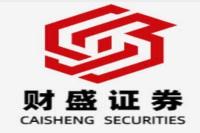Escaping the Middle-Income Trap: China's Technological Leap
Meta Description: Navigating China's technological challenges, exploring strategies for overcoming the "middle-income trap" through innovation, and building a robust technological ecosystem. Keywords: China's technology, middle-income trap, technological innovation, innovation ecosystem, foundation research, applied technology, financial support.
Wow, China's rapid economic ascent is undeniable! But beneath the surface of "Made in China" lies a fascinating challenge: escaping the dreaded "middle-income trap." This isn't just about money; it's a deep dive into the complexities of technological innovation, requiring a seismic shift in how China approaches research, development, and industrial strategy. This isn't your grandpappy's economic analysis – this is a fresh perspective, grounded in real-world insights and data, examining the three key hurdles blocking China's path to advanced technological dominance. We'll unearth the critical components needed for a successful technological leap, blending economic theory with on-the-ground realities. Buckle up, because this journey will uncover actionable strategies, exploring the crucial interplay of fundamental research, applied technology, and a dynamic financial system – the trifecta of technological advancement. We'll explore concrete examples, unravel intricate challenges, and present a compelling roadmap for China to ascend to the top tier of global technological powers. A gripping narrative awaits, revealing how China can transform its manufacturing prowess into a globally competitive innovation powerhouse.
China's Technological Landscape: A Middle-Income Reality Check
Let's face it: China's technological prowess is currently a bit of a mixed bag. While boasting impressive manufacturing capabilities – a whopping 29.79% of global manufacturing value-added in 2021, nearly matching the combined output of the US, Japan, Germany, South Korea, and India! – the reality is more nuanced. The "Made in China" label, while globally recognized, doesn't always equate to technological leadership. In fact, many experts agree China is stuck in a "middle-income trap," a technological plateau where innovation stagnates.
This isn't just about a lack of overall volume; it’s about the type of technologies dominating the landscape. While some applied technologies have reached global leadership status, these successes remain fragmented and haven't coalesced into a systemic advantage. We see this gap reflected in various key indicators:
- 原创性技术匮乏 (Lack of Original Technology): China's innovation often focuses on incremental improvements (going from "1 to 10") rather than groundbreaking discoveries (going from "0 to 1"). This reliance on adapting existing technologies hinders the development of truly unique and disruptive innovations.
- 高技术层次发展薄弱 (Weakness in High-Tech Development): While impressive strides have been made, China lags behind leading nations in cutting-edge technologies. Many crucial sectors still rely heavily on imported components and expertise.
- 缺乏系统化优势 (Lack of Systemic Advantages): Isolated successes, while impressive, aren't enough. A truly dominant technological powerhouse needs a robust, interconnected ecosystem of research, development, and manufacturing, something still developing in China.
This "middle-income trap" isn't just an economic predicament; it's a systemic challenge. Overcoming it requires a multi-pronged approach that addresses fundamental weaknesses in research, development, and the overall innovation ecosystem.
The Trifecta of Technological Innovation: A Roadmap for Success
Escaping this trap isn't merely about throwing money at the problem. It requires a synergistic approach, a carefully orchestrated dance between three key pillars:
1. Robust Foundation Research (基础科研): This is the bedrock of all technological advancement. China needs to massively invest in fundamental scientific research, fostering a culture of intellectual curiosity and long-term exploration. This requires:
- Strengthening Educational Systems: Cultivating a generation of scientists and engineers capable of pushing the boundaries of knowledge. This means shifting from rote learning to critical thinking and problem-solving skills.
- Streamlining Research Management: Reducing bureaucratic hurdles and fostering collaboration between universities and research institutions. More autonomy for researchers and less emphasis on short-term results are crucial.
- Building a world-class infrastructure: Providing state-of-the-art labs and equipment, promoting inter-institutional collaboration and creating a vibrant research network.
2. Effective Applied Technology (应用技术): Brilliant discoveries are useless without effective translation into practical applications. This demands:
- Investing in Engineering Education: Focusing on practical skills, engineering design, and problem-solving, rather than just theoretical knowledge.
- Addressing Incentive Misalignments: Creating a system that rewards long-term research and innovation, rather than solely focusing on short-term gains or publications.
- Empowering Businesses: Making sure that businesses, both state-owned and private, play a central role in the technology transfer process. This includes creating incentives for businesses to invest in R&D and fostering collaboration between industry and academia.
- Developing Open Industrial Labs: Promoting sharing of resources and knowledge between different institutions and making these resources accessible to private companies.
3. Dynamic Financial Support (金融支持): Even the most brilliant ideas need funding to flourish. China needs a robust financial ecosystem that supports both fundamental research and applied technology:
- Developing a Venture Capital Ecosystem: Mirroring the success of Silicon Valley, China needs a vibrant venture capital industry that identifies and funds promising technologies. This requires less reliance on state-owned enterprises and more private sector participation.
- Leveraging Hong Kong's Financial Hub: Utilizing Hong Kong's strengths as a global financial center to attract international investment and expertise.
- Strategic Government Investment: Government-backed funds can play a vital role in high-risk, high-reward research areas, but they must be managed strategically and collaboratively with the private sector.
Overcoming Obstacles: Strategies for Success
The path forward requires addressing significant challenges:
- Breaking Down Silos: Fostering collaboration between academia, industry, and government is paramount. Information sharing and cross-sector partnerships are key.
- Cultivating a Culture of Innovation: Encouraging risk-taking, experimentation, and long-term vision is essential. A culture that celebrates failures as learning opportunities is crucial for true innovation.
- International Collaboration: China needs to actively participate in global research and development efforts, learning from and partnering with leading nations.
Frequently Asked Questions (FAQ)
Q1: What is the "middle-income trap," and why is it relevant to China?
A1: The "middle-income trap" describes the phenomenon where countries struggle to transition from middle-income to high-income status due to various economic and technological barriers. China, despite its remarkable growth, faces this challenge due to its reliance on technology adaptation rather than original innovation.
Q2: Why is original innovation so crucial for escaping the middle-income trap?
A2: Original innovation allows a nation to create unique technological advancements, providing a competitive edge in the global market and driving long-term economic growth. Relying solely on adapting existing technologies limits potential and makes a country vulnerable to global economic shifts.
Q3: What role does the government play in fostering technological innovation?
A3: The government plays a crucial role in setting the stage for innovation by investing in fundamental research, creating supportive policies, and fostering collaboration between various sectors. However, it's vital to balance government intervention with market forces to prevent stifling innovation.
Q4: How can China improve its applied technology sector?
A4: China needs to focus on cultivating engineers with strong problem-solving skills and fostering collaboration between universities and industries. Additionally, addressing incentive misalignments and promoting a market-driven approach are crucial.
Q5: What is the significance of financial support in technological advancement?
A5: Funding is the lifeblood of innovation. A robust financial ecosystem, including venture capital and strategic government investment, is essential to support both fundamental research and the commercialization of new technologies.
Q6: What are some key indicators that show China’s progress in escaping the middle-income trap?
A6: Key indicators include the number of patents filed, the amount invested in R&D, the number of high-tech companies, and the overall level of technological self-reliance in key sectors. These indicators, when tracked over time, show whether China's innovation efforts are bearing fruit.
Conclusion
China's journey to become a global technological leader is a marathon, not a sprint. Successfully navigating the "middle-income trap" requires a fundamental shift in mindset, emphasizing original innovation, collaborative efforts, and a dynamic financial system. By focusing on these three pillars – robust foundation research, effective applied technology, and dynamic financial support – China can build a robust innovation ecosystem capable of driving sustainable economic growth and securing its place as a technological superpower. The path ahead is challenging, but with strategic planning and sustained effort, the goal of escaping the middle-income trap and achieving technological leadership is within reach. The world watches with bated breath.



